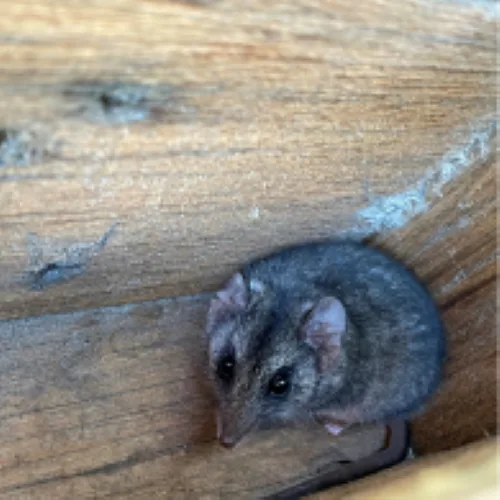Scientists have made a surprising discovery about the endangered Kangaroo Island dunnart, revealing that the tiny marsupial is not just a ground dweller – as previously thought – but also climbs trees and shelters in hollows.
The discovery was made during the Kangaroo Island Nest Box Project, when researchers Sophie ‘Topa’ Petit of the University of South Australia and Peter Hammond of the Kangaroo Island Research Station stumbled upon several of the carnivorous dunnarts sheltering inside artificial nest boxes originally installed for use by other animals.
Published in Pacific Conservation Biology, the research reports the first-ever record of Kangaroo Island dunnarts found in trees.
The mysterious Kangaroo Island dunnart – previously thought to be a ground dweller – has now been found in trees. Credit: University of South Australia
In 2019 and 2020, a series of devastating bushfires, collectively known as the Black Summer fires, swept across Kangaroo Island – the third-largest island in Australia, located 70 miles south-west of Adelaide. Conservationists believe 98% of the Kangaroo Island dunnart’s known habitat was destroyed, pushing the species close to extinction.
Dunnarts weren’t the only animals to feel the impact of the fires, which burnt through almost half of the island. In an attempt to help wildlife recover, volunteers installed hundreds of species-specific nest boxes, including more than 400 for pygmy-possums and 350 for bats.
It was during a check of these boxes that Hammond made the surprising discovery. “The last thing I expected to find in one of our pygmy-possum nest boxes some distance up in a mallee eucalypt was a dunnart. It was a wonderful surprise,” he says.
The team recorded three separate dunnart sightings between 2022 and 2025 at Karatta on the western side of Kangaroo Island. One was resting on a bed of fine wood shavings, suggesting the species may even be building nests in these hollows.
Petit says the finding is important “not only because the ecology of this threatened species is poorly known, but also because it is evidence of yet another species using tree hollows, which are very important to biodiversity conservation.”
The study notes that while nest boxes may provide animals with a place to shelter, these artificial hollows can also attract predators and increase competition. There is still much to learn about hollow-using wildlife, the researchers conclude.
Top image: Kangaroo Island forest. Credit: Getty
More wildlife stories from around the world
Images are for reference only.Images and contents gathered automatic from google or 3rd party sources.All rights on the images and contents are with their legal original owners.
